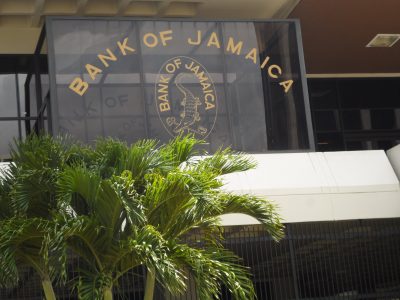Jamaica’s largest commercial bank may not be Jamaica’s central bank, but their size and profitability probably rank them just behind Bank of Jamaica as the most powerful and influential financial institution in the country. NCB’s influence on the local forex market is only exceeded by that of BOJ, no other bank comes close, locally and their power and reach may have saved the country from steep devaluation and a major rundown of the NIR.

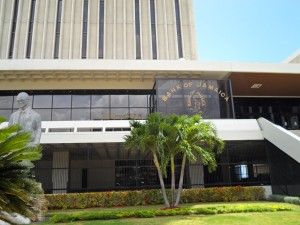
In September, after the Jamaican dollar rate versus the US dollar climbed above J$151, ICInsider.com was reliably informed that NCB management thought the rate was overextended and the bank sold large amounts into the market that helped to push the rate down towards $142 by the month end. The sales were made easier by the banking group, with the confirmation that they had raised US250 million from the issuance of diversified payment rights for payments due from correspondent banks.
NCB is not the darling of a large segment of Jamaican society as they dominate so much of the financial sector. Many Jamaicans see the multi-billion profit of the NCB Group as insane in a country where the majority struggle financially. Worse, many small customers of the bank see them as uncaring and lacking good customer relation practices.
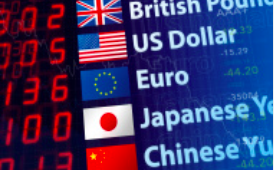 The extent of NCB’s impact on the local foreign exchange market is not fully known. There are strong views by many with knowledge of developments within the financial sector that sees National Commercial Bank as the main players that influence the value of the Jamaican dollar and they do not like it.
The extent of NCB’s impact on the local foreign exchange market is not fully known. There are strong views by many with knowledge of developments within the financial sector that sees National Commercial Bank as the main players that influence the value of the Jamaican dollar and they do not like it.
Data out of the Bank of Jamaica for 2019 and 2020 indicate clearly that NCB impact on the market is extremely significant, but not in the manner many persons think. The data shows that when NCB is not a major net seller in the market, the exchange rate tends to depreciate and when they are not net sellers, the rate tends to appreciate.
In the period from the start of 2020 to late September, NCB sold a net of US$692 million to the market, in stark contrast to their nearest rival – Bank of Nova Scotia. BNS bought a net of US$38 million over the same period. In September last, NCB sold a net of US$127 million short and only had net purchase on just three days in the month.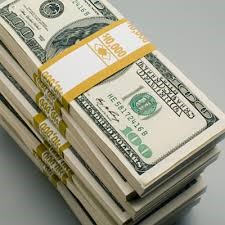
NCB’s net sales in 2020 follow a significant US$453 million net sales for the twelve months in 2019. NCB sold a net of US$217 million to the system between October and December last year, bringing the total for the year to a stunning US$909 million.
According to a spokesperson for NCB, the bank actively manages its foreign exchange portfolio, buying long or selling foreign currencies short as their reading of the market dictates. Part of the net sales, they explained, came from the conversion of non-US currencies in overseas markets into US dollars. The bank is also involved in forward contracts for buying and selling of the currency, this publication was informed by someone close to the group.
Included in funds sold to the market in 2020 was the conversion of CAD$400 million that was sold into the system as US dollars.
The boom continues
Net remittance inflows for January this year jumped a massive 39 percent or US$63 million above the January 2020 inflows to US$224.4 million, data from Bank of Jamaica shows.
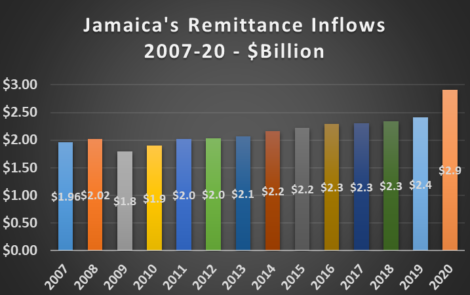 The sharp increase follows from the strong rise seen since May last year when inflows grew 41.6 percent, with the remaining months of the year increasing over thirty percent, except November that grew by 19 percent. For January this year, gross remittance inflows grew 32.7 percent or US$59.4 million to US$241 million. The trends suggest that the country could see earnings from this are exceeding US$3 billion for the first time, having grossed US$2.9 billion in 2020 and increased by US$500 million or 21 percent. According to data out of Jamaica’s central bank from 2013 up to 2019, remittance inflows have grown by an average of US$57 million per annum or 3%. The year with the highest increase was 2014 when a four percent rise delivered provided the country with a $92 million increased inflows and the year with the lowest increase was 2017 with an increase of just $14 million for a one percent rise.
The sharp increase follows from the strong rise seen since May last year when inflows grew 41.6 percent, with the remaining months of the year increasing over thirty percent, except November that grew by 19 percent. For January this year, gross remittance inflows grew 32.7 percent or US$59.4 million to US$241 million. The trends suggest that the country could see earnings from this are exceeding US$3 billion for the first time, having grossed US$2.9 billion in 2020 and increased by US$500 million or 21 percent. According to data out of Jamaica’s central bank from 2013 up to 2019, remittance inflows have grown by an average of US$57 million per annum or 3%. The year with the highest increase was 2014 when a four percent rise delivered provided the country with a $92 million increased inflows and the year with the lowest increase was 2017 with an increase of just $14 million for a one percent rise.
More gains for Jamaican Dollar
The Jamaican dollar closed trading on Thursday at $144.48, an improvement over Wednesday’s closing selling rate of $145.30 to one US dollar.
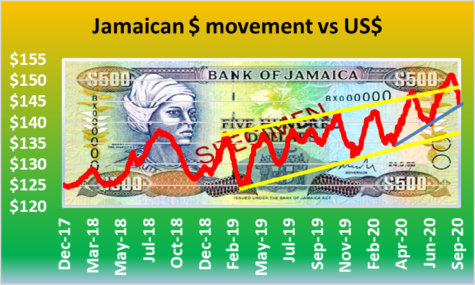 Since August when the rate hit a low of $151.27 against the US dollar, the local dollar has rebounded 4.5 percent. A number of developments have occurred to help the local currency. Unbeknown to many is an issue of $5 billion government bond with a duration of more than 30 years that pulled liquidity out of the market to purchase them at an average rate of just over 7 percent, there was also another issue at the beginning of September for J$3 billion bonds resulting in an average rate of 2.91 percent for the instrument that has a two and a half years life. In addition, the reopening of the tourism sector would be adding some badly needed US dollars to the system.
Since August when the rate hit a low of $151.27 against the US dollar, the local dollar has rebounded 4.5 percent. A number of developments have occurred to help the local currency. Unbeknown to many is an issue of $5 billion government bond with a duration of more than 30 years that pulled liquidity out of the market to purchase them at an average rate of just over 7 percent, there was also another issue at the beginning of September for J$3 billion bonds resulting in an average rate of 2.91 percent for the instrument that has a two and a half years life. In addition, the reopening of the tourism sector would be adding some badly needed US dollars to the system.
The trendlines shown in yellow, on the chart suggest further appreciation that could take it below $140 to one US dollar. The chart shows the local currency on an upward rise since December 2018 as it meanders upwards to hit the low point in August and has since been correcting. It could return to the support line at around $138 later in the year but it could face resistance at the $144 region.
In Thursday’s trading, dealers sold $58 million at $144.48 and bought US$42 million at an average rate of $143.36. National Commercial Bank was the biggest seller on Thursday with US$18.3 million at a rate of $144.20, up from $7.7 million sold on Wednesday, while they bought just US$3.5 million on Thursday at $141.10. JN Bank bought just US$315, 000 at an average of $141.10 and sold US$8.8 million at $143.75. Mayberry Investments bought US$4.6 million at an average of $144.21 and sold only $873,000 at $144.59.
BOJ overnight rate still 0.50%
Bank of Jamaica announced the decision to maintain its accommodative monetary policy stance by holding the overnight policy rate offered to deposit-taking institutions at 0.50 percent per annum.
 In announcing the decision to hold the rate Governor of the Bank of Jamaica, Richard Byles, stated, “I think it is important to emphasize that Jamaica’s financial system remains sound, well-capitalized and its current holdings of Jamaica Dollar liquid balances remain adequate. To ensure that orderly conditions are maintained, Bank of Jamaica has taken some pre-emptive measures to assure financial institutions and the public of adequate access to both Jamaica Dollar and foreign currency liquidity during this challenging period. There are a total of eight such measures, three in respect of foreign currency and five to do with Jamaica dollar liquidity.”
In announcing the decision to hold the rate Governor of the Bank of Jamaica, Richard Byles, stated, “I think it is important to emphasize that Jamaica’s financial system remains sound, well-capitalized and its current holdings of Jamaica Dollar liquid balances remain adequate. To ensure that orderly conditions are maintained, Bank of Jamaica has taken some pre-emptive measures to assure financial institutions and the public of adequate access to both Jamaica Dollar and foreign currency liquidity during this challenging period. There are a total of eight such measures, three in respect of foreign currency and five to do with Jamaica dollar liquidity.”
The central bank introduced a number of measures including the continued support of the foreign exchange needs of businesses in the real sector through direct sales to authorized dealers and Cambios, as needed. Increased limit on the foreign currency net open positions of authorized dealers by 5 percentage points.
The central bank states that it stands ready to expand the volume of foreign currency swap arrangements with authorized dealers. The stock of outstanding swap contracts now totals US$86 million.
The Bank commenced a bond-buying programme of GOJ securities on the secondary market from financial institutions and is prepared to effect early redemption BOJ securities. The Bank has so far purchased $26.3 billion GOJ instruments.
BOJ removed the limit on the amounts that deposit-taking institutions (DTIs) can borrow overnight without being charged a penal rate.
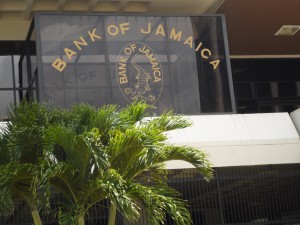
BOJ interest cuts overnight rate.
Effective today, we have re-introduced a longer-term lending facility, whereby Jamaica Dollar liquidity will be made available to DTIs for periods of up to six months. This enhances the ability of these institutions to secure their liquidity needs over a longer horizon.
We will re-activate an intermediation facility where BOJ will use its balance sheet to facilitate transactions between holders of liquid balances and others who require liquidity if needed. This facility should support a more even distribution of liquidity in the financial system in a context where institutions who could not access inter-bank loans because of the limits placed on them by lenders, can now do so indirectly with the central bank standing in the middle of the transaction.
As of 25 March 2020, the total value of liquidity assistance provided by the BOJ to the market via its short-term lending facilities and its asset purchase programme amounted to $57 billion.
“We believe that these measures will help to facilitate the smooth functioning of the credit market. Support inflation remaining within the inflation target of 4 percent to 6 percent over the ensuing eight quarters and will augment the fiscal measures already put in place by the Government,“ the BOJ governor stated.
The economic outlook, however, is characterized by significant uncertainty relating to the spread of the virus and the consequent depth and duration of the economic impact. In the near term, some upward price pressures can be expected due to supply chain disruptions and weather-related increases in agricultural prices. However, these will be offset by a sharp decline in oil prices and weaker consumer spending power, given the expected decline in economic activity. If the domestic and external responses to the pandemic have to be sustained for most of next fiscal year, the Jamaican economy will contract significantly. In this context, we expect inflation to be at the lower end of the 4.0 percent to 6.0 percent range over the fiscal year as well as the ensuing eight quarters.
The near-term outlook now, however, reflects significant challenges and heightened uncertainty due to COVID-19. Our monetary policy measures, along with the Government’s fiscal stimulus, are aimed at mitigating the impact of this pandemic on the economy and supporting a speedy recovery once the crisis has passed. BOJ states that it will continue to monitor the effects of COVID-19 on the economy closely. The central bank also indicates that it stands ready to deploy additional measures to ensure the continued smooth flow of liquidity to all participants in the Jamaican financial system and to maintain orderly conditions within the foreign exchange market. Actions the BOJ could take include a reduction of the policy rate and the cash reserves requirement,
Business confidence rises
Perception of Present and Future Business Conditions rose in the December 2019 a survey, conducted on behalf of Bank of Jamaica reveals.
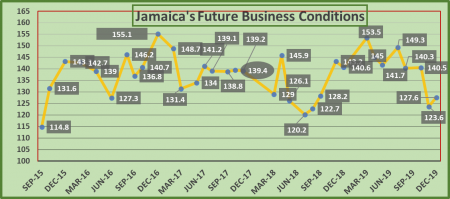 According to a report from Jamaica’s central bank, the Present Business Conditions Index increased to 115.8 from 111.3 recorded in the previous survey done in November. The Future Business Conditions Index rose to 127.6 from 123.6 in the November survey.
According to a report from Jamaica’s central bank, the Present Business Conditions Index increased to 115.8 from 111.3 recorded in the previous survey done in November. The Future Business Conditions Index rose to 127.6 from 123.6 in the November survey.
The advance in the Present Business Conditions Index reflected an increase in the number of respondents of the view that conditions are “better.” The outturn for the Future Business Conditions Index mainly reflected an increase in the proportion of respondents who believe that conditions will be “better.”
The latest report, although up is still below the 128.9 recorded for present conditions in March 2019 while future business conditions, peaked at 155.1 in December 2016 and is still well ahead of the December 2019 count and the recent peak of 153.5 in March 2019 is way ahead of the 2019 year-end result.
IC Insider.com observations are that the scores are heavily influenced by the rate of exchange of the local currency versus the United States dollar, resulting in sentiments falling when the Jamaican dollar comes under pressure and reverses when it appreciates or stays relatively stable.
BOJ sold US$30m to FX market on Friday

BOJ interest cuts overnight rate.
Bank of Jamaica introduced a bidding system when they intervene in the foreign exchange market officially called “Foreign Exchange Intervention and Trading Tool (BFXITT).” The system was introduced in 2017 with the central bank buying and selling funds in the market whereby authorized dealers and Cambios had bid for the amounts on offer.
Friday’s intervention was to address temporary demand and supply imbalances in the market Jamaica’s central bank stated. Friday’s intervention is the first being made since the central bank intervened with two flash sales on July 18 and 19th this year with a total sale of US$35 million and prior to, US$30 million on July 11.
 In 2017 and 2018 the central bank had regular weekly scheduled interventions in the market from August to October and November, but there has been none in 2019 after BOJ lowered the amount dealers had to surrender to the central bank from amounts they bought weekly.
In 2017 and 2018 the central bank had regular weekly scheduled interventions in the market from August to October and November, but there has been none in 2019 after BOJ lowered the amount dealers had to surrender to the central bank from amounts they bought weekly.The amount offered for sale on Friday attracted 42 bids amounting to US$72.6 million but just 17 were accepted with the highest bid at $139.15 and the lowest at $137. Bids at $138.65 got 33.33 percent of the amount applied for.
The intervention comes against the background of the country’s Net International Reserves climbing US$162 million, from US$2.936 billion at the end of August to US$ 3.098 billion at the end of September.
Scotia Group to pay $7.6b in dividends

Scotia to make big payout.
The directors state that the special dividend is to payout years of accumulated surplus that has built up over the years. The payments comes against the drop ground of net profit for the April quarter coming in a $3.295 billion versus $3.3 billion in 2018 and $5.6 billion compared to $6.76 billion year to date in 2018 with the latter being boosted by one off gain from sale of a subsidiary of $753 million.
The group reports an eleven percent growth in its loan portfolio to reach $189 billion from $171 billion in April 2018, but just 3.4 percent since October last year.
The decision to make the special payment is not surprising with the sharp cut in cash reserves requirement at the country’s central bank and the low levels of interest rates that currently prevail in the economy.
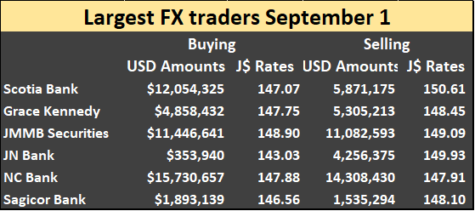 Bank of Jamaica placed on sale through their B-FXITT Flash sale mechanism, US$20 million on Tuesday, with the results suggesting exhaustion of the speculative bubble. The sale was the first on record when the demand was less than the amount offered by the central bank since they started this method of intervention three years ago.
Bank of Jamaica placed on sale through their B-FXITT Flash sale mechanism, US$20 million on Tuesday, with the results suggesting exhaustion of the speculative bubble. The sale was the first on record when the demand was less than the amount offered by the central bank since they started this method of intervention three years ago. At the March auction, for T-bill, rates moved up from 1.337 percent in February to 1.85 percent in March for the shorter-term treasury rate and from 1.387 percent for the 192 days to 1.796 percent. The rates are coming from a low of 1.252 percent and 1.453 percent, respectively in January this year.
At the March auction, for T-bill, rates moved up from 1.337 percent in February to 1.85 percent in March for the shorter-term treasury rate and from 1.387 percent for the 192 days to 1.796 percent. The rates are coming from a low of 1.252 percent and 1.453 percent, respectively in January this year.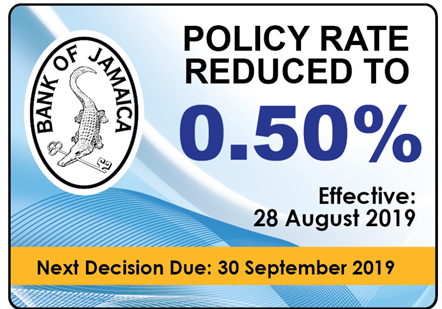 Bank of Jamaica cuts the overnight policy interest rate by 25 basis points to just
Bank of Jamaica cuts the overnight policy interest rate by 25 basis points to just 